
views
How to Sleep on the Floor Comfortably

Clean off the section of the floor you’d like to sleep on. Clear away any clutter around the space so you have plenty of room to lay out your pillows and blankets. Take a moment to vacuum, sweep, and mop the area, too, so it’s as clean and dust-free as possible.

Find a carpeted spot. Soft carpeting and rugs tend to feel warmer than other surfaces in your home. Plus, they often provide more cushioning. Using these surfaces may feel somewhat similar to laying on a mattress, so you’ll most likely have an easier time falling asleep (and experience less stiffness when you wake up).
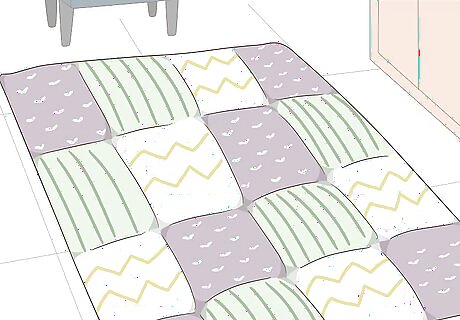
Lay a thick sheet or mat on the ground. Pick something that will give you a lot of cushioning, like a quilt or sleeping bag. If you don’t have anything thick enough, stack a couple of blankets or towels together for good measure. Once it’s all set up, test your sleeping pad out to make sure it provides plenty of support for your back. Did you know? Sleeping on a padded surface is fairly commonplace in some parts of the world. In Japan, for instance, some people choose to sleep on futons, which are padded sleeping surfaces that are laid out on the floor (or on another surface, like a mat).
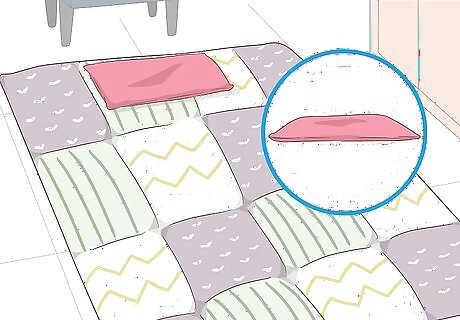
Place a thin, soft pillow at the end of the bed. You only need 1 good pillow, so choose a pillow that feels comfortable when you rest on it. Make sure it’s on the softer and thinner side so it doesn’t lift your head too much. Sleeping with pillows that are on the stiff and tall side can lead to neck pain. If neck pain is a concern for you, shop for memory foam pillows that offer plenty of support to your neck, or opt for a feather pillow.

Get a warm blanket to cover yourself at night. Once you have your base set up, complete your bed with some top layers. What you need depends on how warm you feel. Floors are often much colder than a mattress, so plan on having at least 1 warm blanket or thick comforter. If you tend to run hot when you sleep, you might not need very much at all. Experiment with different sheets, blankets, and comforters until you find a setup that works well for you. Don’t underestimate sleeping bags. They’re a source of warmth and comfort whether you’re out in the wilderness or at a sleepover.
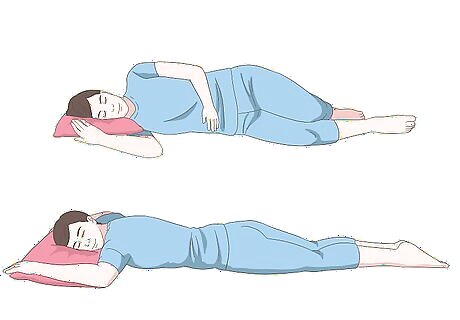
Test out different sleeping positions. Try sleeping on your back, side, and stomach to see which position feels most comfortable. Here are a few tips to help each position feel even more comfortable: Back sleeping: Slip an extra pillow beneath your knees to provide extra support. It may also help to slip a rolled-up towel beneath your waist area. Stomach sleeping: Slip a pillow beneath your lower abdomen and hips to help prevent back strain. Side sleeping: Tuck your legs so they’re bent slightly toward your chest. Then, sandwich a pillow between your legs to help keep your body properly aligned. Warning: Try to avoid stomach sleeping if back pain is a frequent issue for you.

Create the perfect environment by adjusting the light and temperature. Open a window or adjust your thermostat so your sleeping space is cool and comfortable (around 65 to 68 °F (18 to 20 °C) is the sweet spot). Make sure all the lights are switched off, and that any other light sources are carefully covered up (with blinds, blackout shades, etc.). If your sleeping spot tends to be on the noisy side, invest in a set of earplugs to keep things quiet. Get your blood pumping 3+ hours before you plan on hitting the hay. This can make it a little easier to fall asleep. Try to set a consistent bedtime and wake-up time. Sleep in a separate space from your pets if they tend to wake you up frequently.
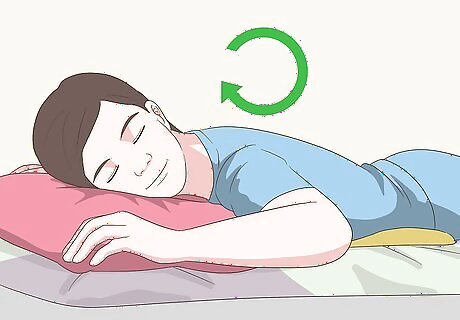
Nap to test out your setup. Practice is the best way to get more comfortable with sleeping on the floor. Although you might feel uncomfortable or even sore at first, taking a few naps in your new sleep spot may help you adjust. If you have a big event, like a sleepover or camping trip, try practicing at home so you are better able to get through the night. Get the gear you plan on bringing to your event, such as a good blanket, your favorite pillow, or a sleeping bag.
Pros of Sleeping on the Floor

Less back pain People who suffer from back pain may have an easier time sleeping on a firmer sleeping surface. Some sleep professionals, for instance, suggest transferring your mattress to the floor or slipping a sheet of plywood beneath your mattress. In a way, sleeping on the floor is just a step further from these suggestions. Note: The jury’s still out on the best mattress firmness for people with back pain. While firm sleeping surfaces may be helpful to some, they may be hurtful to others.

Cooler sleeping experience When you’re cocooned in the warm embrace of blankets and bedding, it’s easy to feel a bit too warm for comfort. Switching to the floor may provide a cooler sleeping experience from your usual bed. Other factors can play into an uncomfortably hot sleep experience, like where you live, what you wear to bed, and if you sleep with a pet or partner.
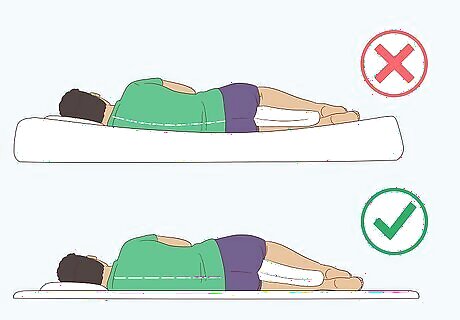
Aids with posture Good posture is all about providing good support and structure to your spine throughout your day-to-day life. When your body lacks good posture, it can lead to negative side effects like joint mobility, spine fragility, breathing issues, and more. While soft mattresses can assist with joint alignment, they may not provide enough support and structure overall. For some, sleeping on the floor may offer more support to their spine than a softer mattress would.
Cons of Sleeping on the Floor

More back pain In one study, researchers found that medium-firm mattresses (rather than firm) were the best option for people who experience low back pain while they sleep. Separate research uncovered that people suffering from low back pain had bad sleep experiences on really firm mattresses. These studies suggest that sleeping on an extra-firm surface (like the floor) might not be the best option for people with back pain.
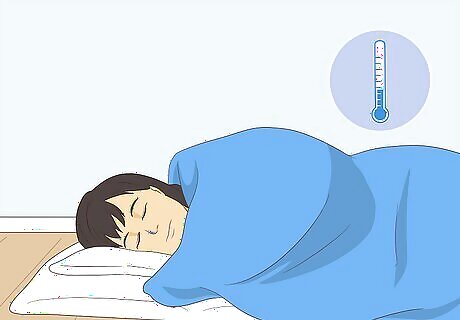
Very cold sleep environment If you’re pretty sensitive to cool temperatures, you might find sleeping on the floor uncomfortably chilly. This could be especially true for people with health conditions like anemia, hypothyroidism, and anorexia, which make people more sensitive to the cold. You may also feel more cold-sensitive if you’re feeling more run-down than usual, or if you’re battling something like a cold or flu.
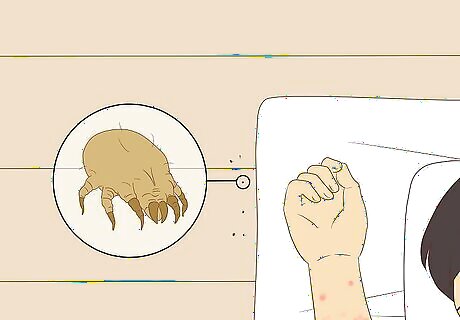
Allergens Your floor could very well contain allergens that make your allergies flare up, like dust mites and dander. If you have allergies, sleeping close to potential allergens on the floor could lead to unpleasant symptoms.
Can you sleep on the floor when you’re pregnant?
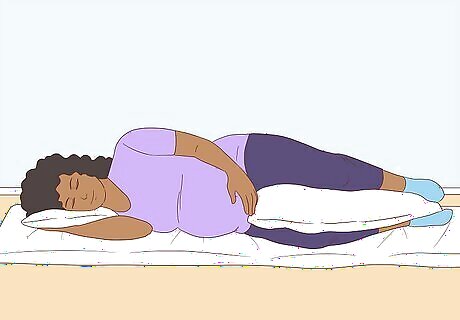
Possibly, but make sure that your back is supported. Stomach sleeping isn’t a great option for pregnant individuals, but sleeping on your side can be a good position if your knees are slightly tucked and a pillow sits between your legs. However you choose to sleep, make sure the curve in your spine is supported. A transition to floor sleeping might be easier if you sleep with your mattress on the ground first. Co-sleeping, or sleeping with your baby, can be risky and lead to potential sleep accidents, like smothering or Sudden Infant Death Syndrome (SIDS). Taking proper precautions, like sleeping with your baby on a firm, floor-level mattress, can help decrease these risks.
When shouldn’t I sleep on the floor?

If you’re on the older side The older you get, the weaker your bones, joints, and muscles tend to get. If you struggle with your mobility and/or joint pain, floor sleeping might not be the best sleeping option for you.

If you struggle with mobility Sleeping on the floor requires you to sit up and stand from a very low position. If the idea of maneuvering yourself off the floor each morning seems pretty daunting, stick with a sleeping arrangement that better accommodates your needs.
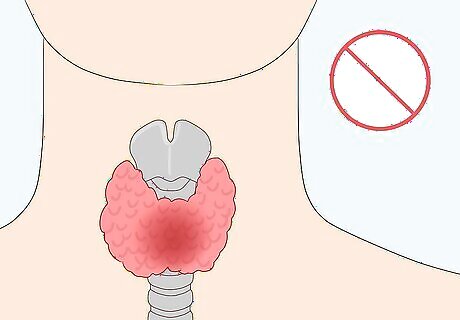
If you have a health condition If you’re juggling a health condition like anemia, hypothyroidism, anorexia, a chronic health issue, or a general illness, sleeping on the floor might not be the best choice for you. Floor sleeping tends to be chillier than sleeping on a bed, and you might be more comfortable (and less cold) sleeping in your usual spot.
Key Takeaways
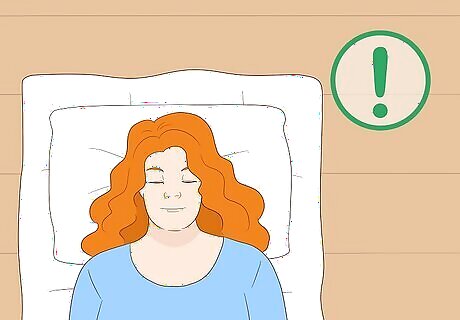
It’s safe to sleep on the floor as long as you take the proper precautions. Ultimately, the choice to sleep on the floor comes down to your own personal comfort. If you decide to give it a try, make sure your sleeping space as comfortable as possible with blankets and pillows. Start by taking naps on the floor before working your way up to a full night’s rest.




















Comments
0 comment